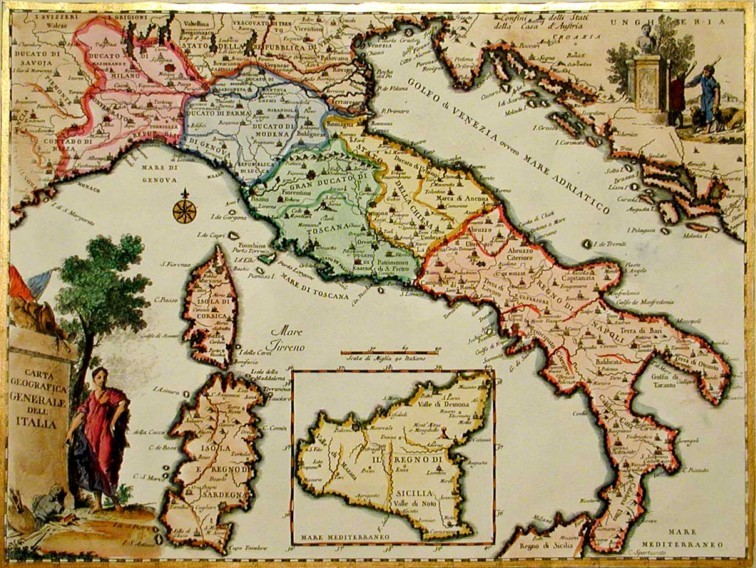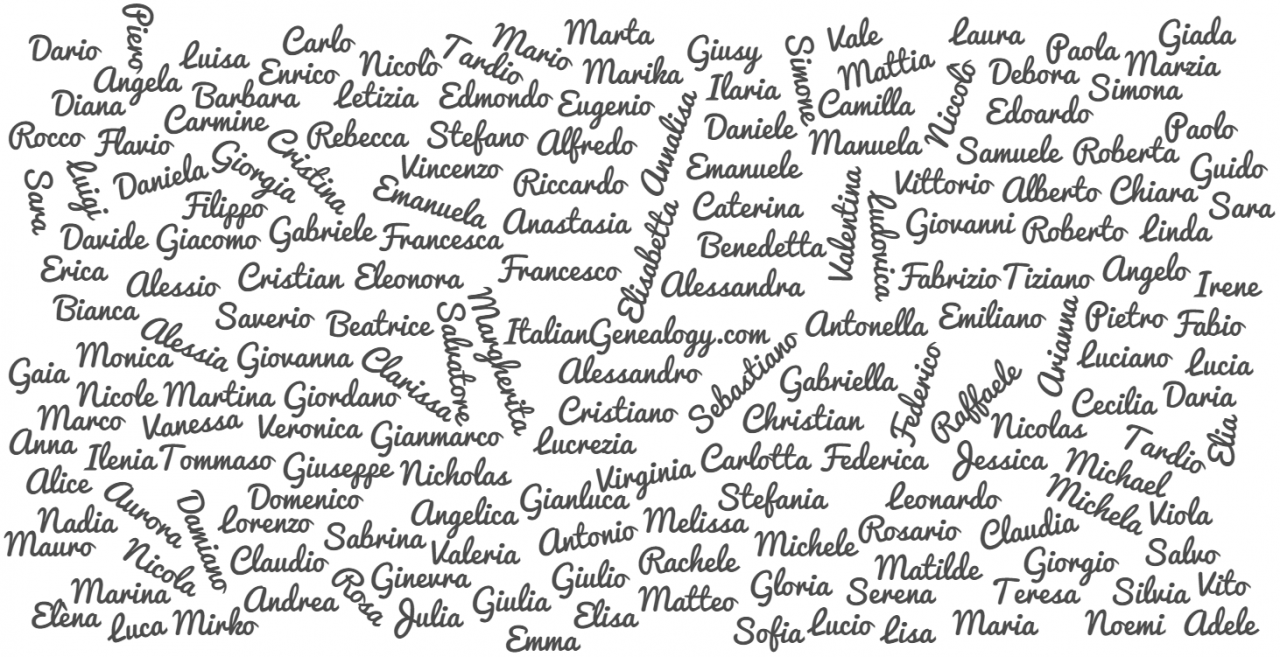Medieval Genealogical Research
The typical Italian lineage dates from circa 1600, and for most of us that's reasonably profound. But who wants to be "typical" when you might be able to trace a lineage into the 1500s or even into the Middle Ages? Because success in this field requires practice and perseverance, as well as skills more specialized than those needed to perform research in modern records, very few genealogists are involved in medieval research. However, even the genealogist who does not engage in medieval projects can benefit from knowing how it is pursued. Here's a general guide.
The most important factor to consider in the development of profound lineages is the availability of records. In many instances, the records that would facilitate such extensive pedigrees simply don't exist. In other cases, however, these records exist and may even be accessible, but first you have to know what you're looking for and how to interpret it once you've found it.
In general, source records available to the researcher tracing a lineage for the period before circa 1500 are not the same as those one consults for more modern and contemporary projects. Since genealogists usually start nearer the present and work backwards, let's consider sixteenth-century records and methods first. A lineage from circa 1700 to circa 1500 is established with parochial records (primarily acts of baptism, marriage and death, the church census record known as the stato delle anime and perhaps a few records of confirmations or offerings) and the occasional census (catasto or rivello), notary or military record. For the period before 1500 there are rarely any parochial records preserved, although, contrary to popular belief, these were kept in some parishes prior to the Council of Trent (1545). Likewise, there are very few census records preserved from the sixteenth century.
If the records consulted for medieval genealogical projects differ considerably from those employed in modern research projects, it is logical that research strategy itself will differ somewhat. This is worth explaining before we proceed. Modern research is essentially methodical in nature because most of the records consulted are "statistical." This kind of research might be said to be "quantitative." This is not to imply that insight and strategy do not play a role in modern research; they certainly do. However, a search through lists or registers is not overwhelmingly difficult for the trained genealogist if he can comprehend old Italian or, in some instances, Latin or a local dialect. Research in medieval sources may be said to be "qualitative," and often provides sketchier ancestral information requiring greater conjectural and contextual knowledge because it does not usually lead to the precise generation-by-generation lineages constructed in modern research projects. One might instead discover a probable remote forebear without establishing his precise line of ascent from a more recent one. It is here that circumstantial evidence plays a greater role than in the research of most modern lineages, but this should not be construed to imply that speculation is the order of the day; historical and sociological knowledge are essential if any degree of accuracy is to be achieved.
The genealogist, for example, may have to conduct a survey to determine the approximate statistical frequency (number) of persons bearing a certain surname in a particular locality in the sixteenth century in order to determine the likelihood of a connection between one of these persons and a person bearing the same surname in the same locality a century earlier.
Medieval records present far greater challenges even to the most astute genealogical scholars. A particular aspect of this research to be aware of is that, by and large, it relates to aristocratic families rather than ordinary ones. However, this does not always imply nobility per se. While many people entertain the perception of noble families as being 'ancient" ones, the simple fact is that most titled families known to us today became ennobled (titled) not during the Middle Ages but in the modern era (i.e. after 1500). Many families of the minor (untitled) aristocracy that flourished before 1500 were important enough to figure in local events during the late medieval period, even though their descendants may have been less prominent during the course of latter centuries. (This is true not only of the untitled aristocracy of what is now Italy, but of the landed gentry of England and the sczlachta of Poland as well.)
An example of this historical development is the Scannapieco family, which by 1700 was prominent enough to be listed among the noble families of Nocera, even though they were never titled and therefore were not to be found in standard heraldic armorials. Following lengthy modern research, consultation of the archive of the nearby Abbey of Cava de Tirreni led to discovery of a manuscript of 1118 describing a land grant made to the Church by a man referred to as "Scannapecus" who was probably a forebear of the Scannapieco family resident in the area today. One observes that there were few references in these records to the titled families that were prominent in the region in more recent times.
Medieval records fall into numerous categories, a few of which we'll describe here.
Monastic or other church records of offerings, land donations and other transactions (sometimes referred to as "tabulations") are preserved in various archives. In some cases, particularly when the abbey itself no longer exists, these may have been deposited with the provincial archive of state or, if the monastery was in the former Papal State, perhaps in the Vatican Apostolic Archive. In general, such records date from the Longobard and Norman rule of Italy around the eleventh century, and may refer to local events considered noteworthy, mentioning local persons.
Medieval notarial records of such matters as land transfers or wills may be available for some localities. As with modern records of this type, acts are catalogued, if at all, by the name of the notary, who might have notarized an act in any one of various localities. This means that there is no clear initial indication of which notary might have notarized a particular act, since jurisdictions were not very localized.
Feudal records typically relate to taxes rendered to the Crown or levied by feudatories, or rents collected from land tenants. There also exist certain rolls which list feudatories and their military or economic service rendered to the Crown, as well as rolls of knights, archers, armorers, et al.
Heraldic records usually do not relate to coats of arms, but to such matters as petition for entry into the Order of Malta, which required genealogical proof of nobility. In such petitions, one might discover a medieval pedigree.
Royal, ministerial or episcopal decrees and circulars and chronicles sometimes mention certain individuals and their role in particular events.
Geographical and agricultural records may provide information that could indicate emigration patterns and lifestyles. Good or bad harvests, drought, war and other factors can be considered in this manner. It may be necessary to visit the family's locality of residence to better assess these developments.



